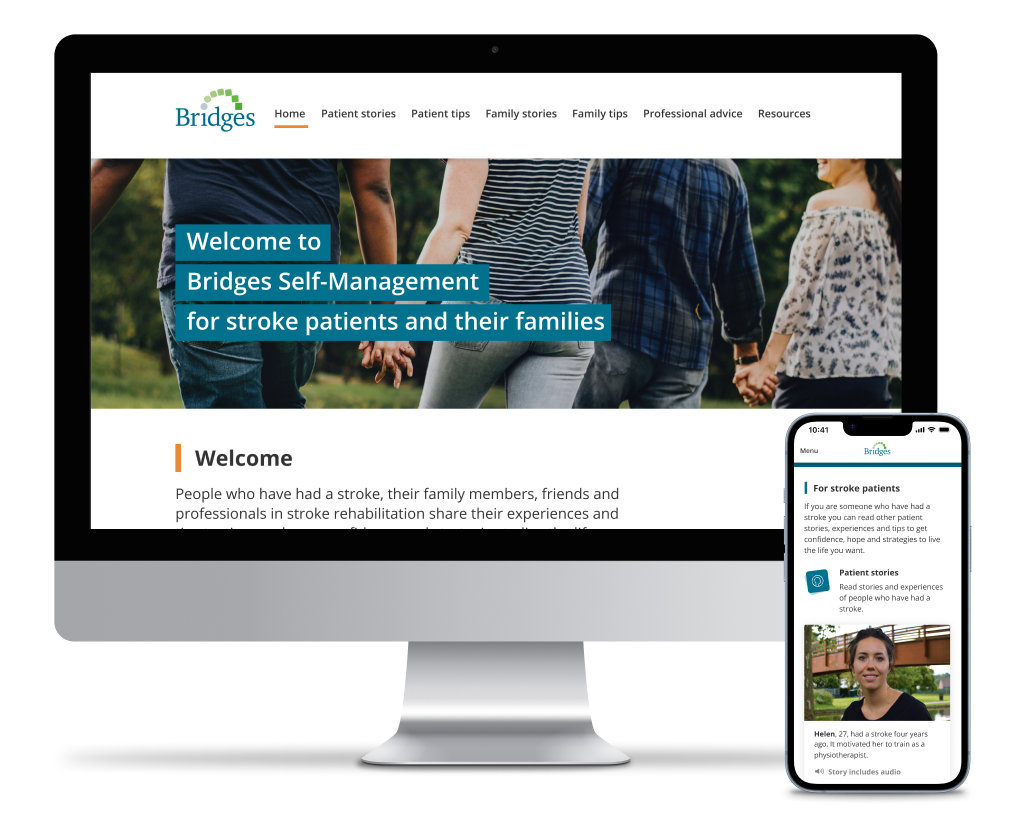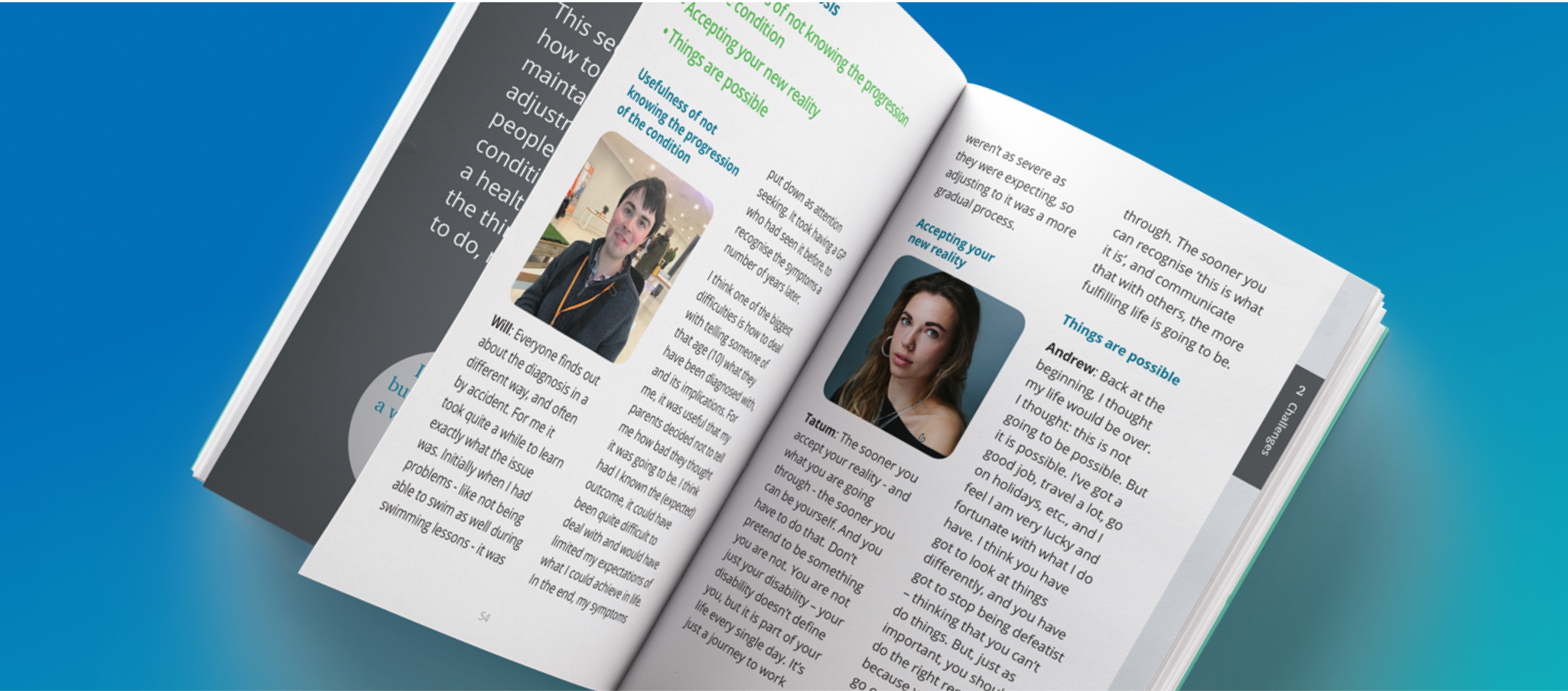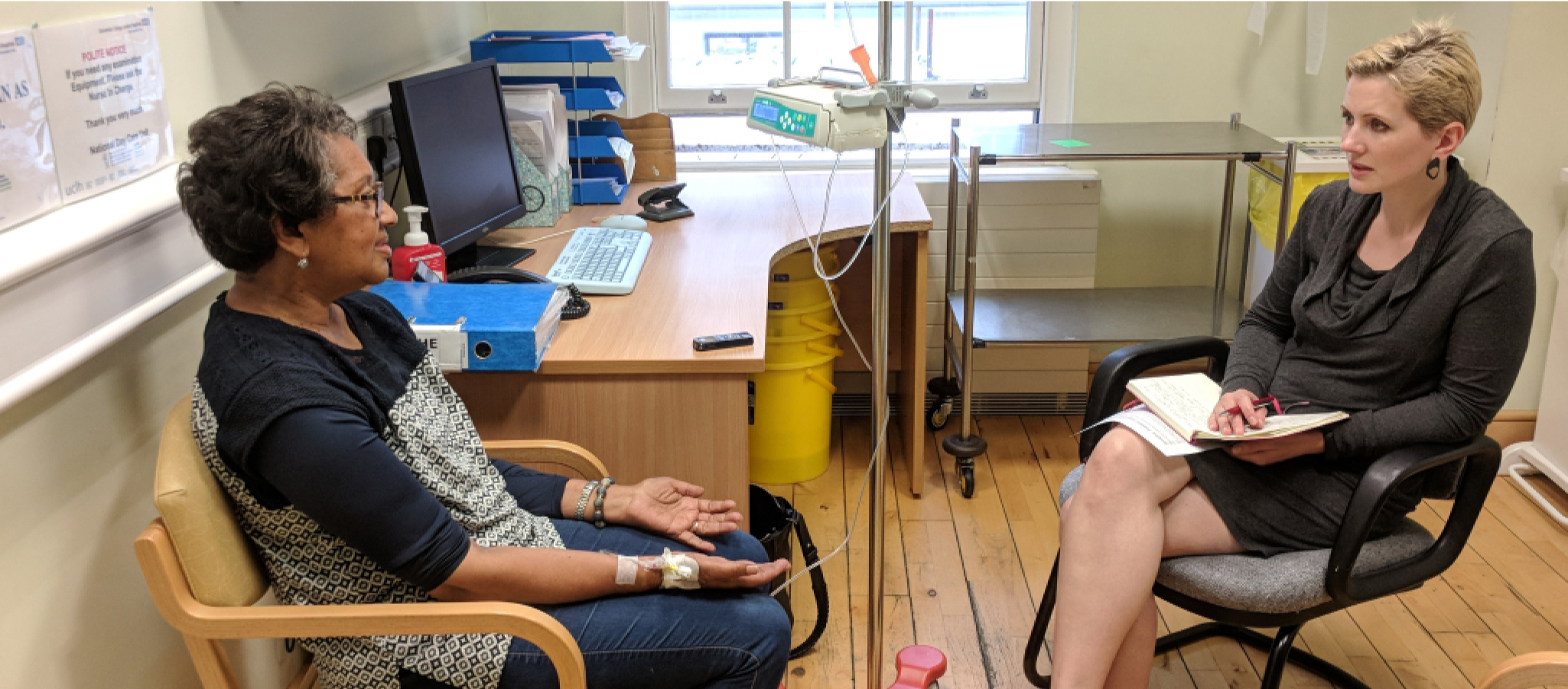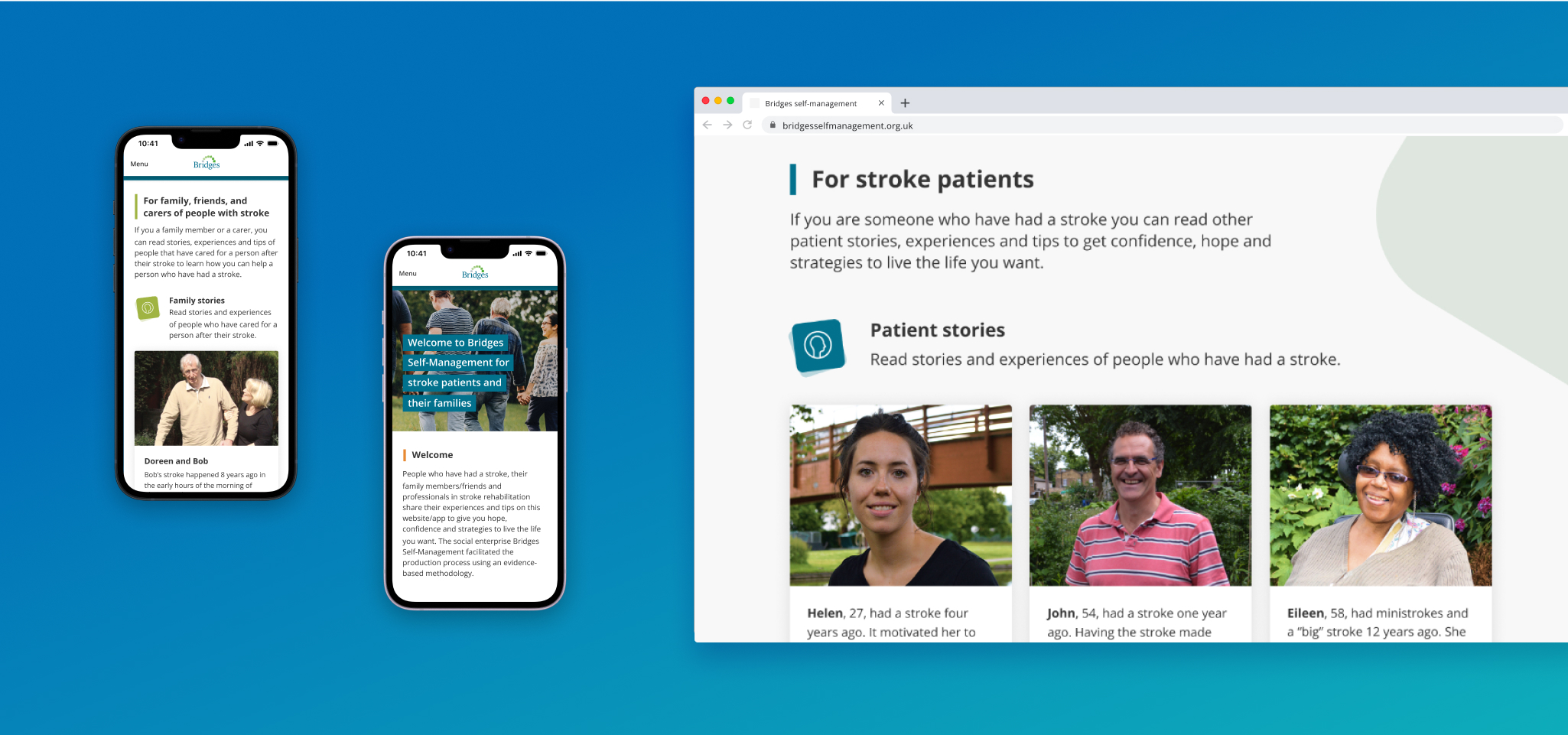User-Centred Design
The project commenced with comprehensive user research aimed at translating the rich content of Bridges’ printed guides into a dynamic digital format. We explored the needs and preferences of users through extensive surveys and interviews, engaging with individuals facing neurological and long-term conditions to ensure our solutions were grounded in real user needs.
Collaborative Development
In partnership with the MRC Centre for Neuromuscular Diseases at UCLH and the South Eastern Health and Social Care Trust (SEHSCT) in Northern Ireland, we focused initially on developing solutions for neuromuscular diseases and stroke survivors. This phase was crucial for understanding condition-specific requirements and crafting a scalable platform that could eventually serve a broader range of conditions.
Building an omnichannel service
Acknowledging Bridges’ goal to reach a wide audience, we developed the solution to be compatible across Android, iOS, and web browsers. Utilising React Native for mobile development and React JS for the web, we maintained a significant portion of the codebase across different platforms. This not only accelerated the development process but also ensured consistency and quality across all user touchpoints.
Robust Content Management
Our development of a bespoke headless CMS API revolutionised how content was managed and served across platforms. This central system allows Bridges’ administrators to update content easily, ensuring that new advice and stories are promptly available, thus supporting the platform’s adaptability and growth.
Adaptability in Various Settings
We addressed the challenge of variable internet access by designing the applications to function effectively offline. This was achieved through the innovative use of custom React Native modules for content download, storage and playback, allowing users to access vital information in environments like hospitals, where connectivity is often limited.
Designing with accessibility in mind
Accessibility was at the forefront of our design process. We engaged in rigorous testing with users who employed a variety of assistive technologies, adjusting and refining the user interface to ensure that the applications were fully accessible and provided an optimal user experience for all.
